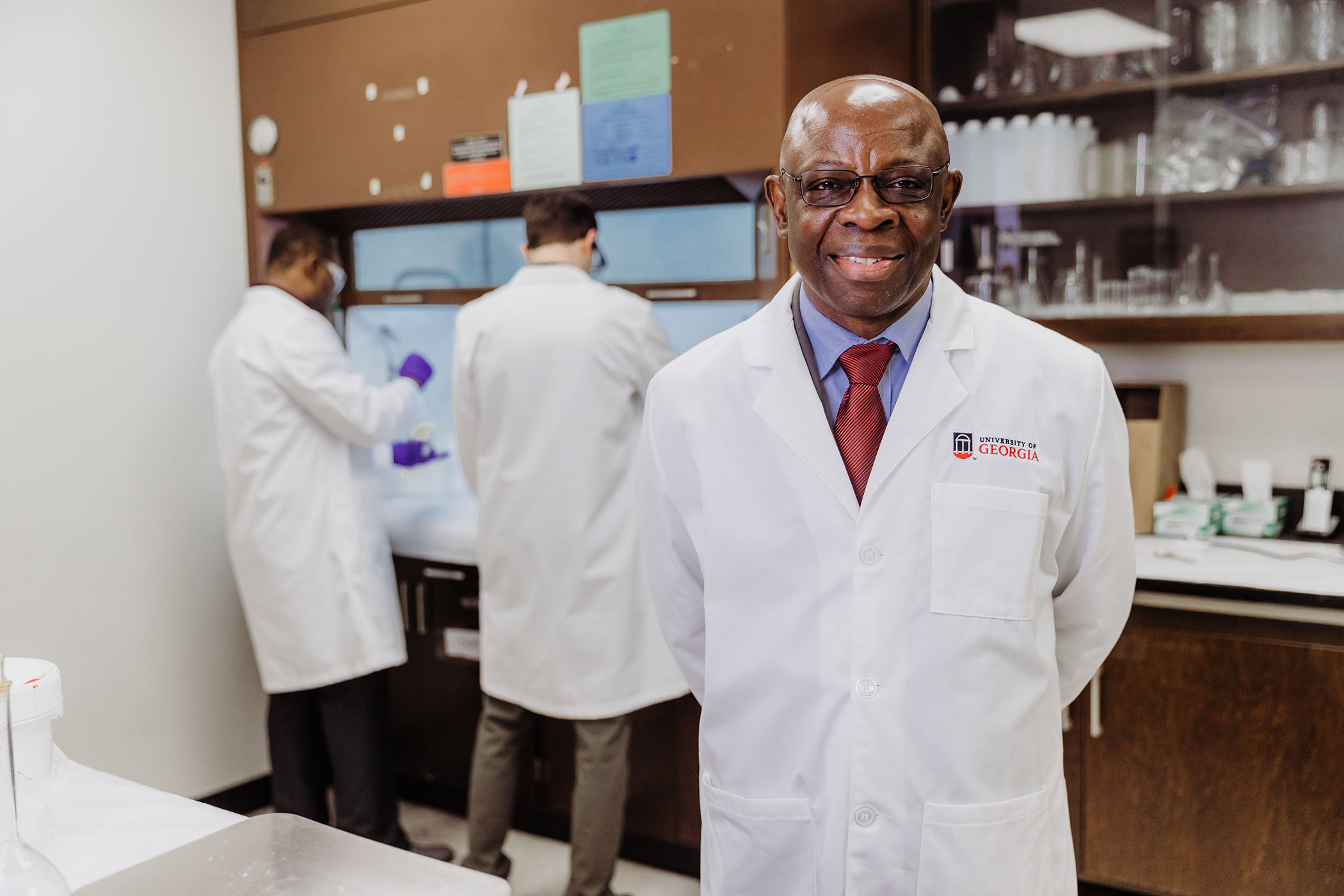MuniRem Demonstration Test: Making the world a safer place
Published on by Water Network Research, Official research team of The Water Network in Technology
Valentine Nzengung: Making the world a safer place
His inventions to neutralize explosives protect humans and the environment
This story is part of a series, called Georgia Groundbreakers , that celebrates innovative and visionary faculty, students, alumni and leaders throughout the history of the University of Georgia – and their profound, enduring impact on our state, our nation and the world.
Valentine Nzengung has spent the vast majority of his professional career working with materials that most people avoid—explosives.
 He has spent countless hours in his laboratory studying the properties of some of humanity’s most dangerous creations, from relatively simple compounds like gunpowder to advanced chemical warfare agents. But Nzengung isn’t interested in creating these materials; he wants to destroy them.
He has spent countless hours in his laboratory studying the properties of some of humanity’s most dangerous creations, from relatively simple compounds like gunpowder to advanced chemical warfare agents. But Nzengung isn’t interested in creating these materials; he wants to destroy them.
And that’s no simple task. It is easier and far cheaper to create explosives than it is to dispose of them. The relative ease with which they are manufactured has led to stockpiles of munitions and other explosives—often the unfortunate legacy of prolonged armed conflict—that many governments and private industries would like to be rid of, and Nzengung is ready to help.
“For many years, the simplest and most common solution was to intentionally detonate or burn explosives in open fields, but that process leaves behind a variety of dangerous byproducts that can pollute the air and soil or leech into lakes, rivers and aquifers,” said Nzengung, professor of environmental geochemistry at the University of Georgia. “Explosives and some of their byproducts have been linked to a variety of human illnesses, including cancer and damage to the central nervous system.”
Product creation
It took many years of study, but Nzengung eventually discovered a way to destroy these dangerous materials safely and sustainably, and he called his creation MuniRem.
Short for “munitions remediation,” MuniRem is a white chemical mixture that, in its bulk form, looks a bit like flour. To use it, all technicians have to do is combine MuniRem with water and introduce it directly to explosive materials. This begins a very fast chemical reaction that neutralizes the explosives in minutes.
More importantly to Nzengung, the byproducts of the complete chemical reaction are all nonhazardous. So not only are the explosives easy to dispose of, but MuniRem can also be used to decontaminate soil and water in places like bomb ranges, mines or munitions factories where dangerous residues have accumulated over many years.
“MuniRem is also particularly attractive because it is between 30 to 50 percent cheaper than other competing technologies,” Nzengung said.
Valentine Nzengung, professor of environmental geochemistry and founder of MuniRem Environmental LLC.
And he has found no shortage of groups interested in his invention. Through his company, MuniRem Environmental, Nzengung and his team have worked on projects with the U.S. Department of Defense, commercial explosives manufacturers, and governments around the world.
“When I talk with people about explosives, most of them immediately think of military ordnance like bombs or missiles, but explosives are far more common than you might think,” Nzengung said. “Mining and construction companies, for example, use explosives to move earth. There are large numbers of confiscated fireworks in warehouses that could be dangerous. Even the airbag in your car relies on a small explosive charge to inflate the bags quickly. So, there are a tremendous number of applications for this technology.”
Explosives aren’t all bad, Nzengung said. They are a normal part of everyday life. But when we need to get rid of them, it’s imperative that we do so as safely as possible.
From dry cleaning to dynamite
While Nzengung has found success with his invention, he didn’t begin his career working with explosives. One of his first research projects focused on the cleanup of soil and groundwater contaminated by solvents used in the dry-cleaning industry, which can be toxic.
Shifting from dry-cleaning waste to explosives may seem like a dramatic jump, but Nzengung doesn’t see it that way.
“From my perspective, this is all about chemistry,” he said. “I look at the chemical bonds in these substances and try to figure out how I can break them down and turn them into something else.”
We’ve known for decades that abandoned toxic and explosive materials needed to be cleaned up, we just didn’t know how. Now we do.” — James W. Porter, Meigs Professor of Ecology Emeritus
Nzengung started in explosives remediation when he worked on a project for the U.S. Department of Defense to clean soil contaminated with perchlorate, an oxygen-adding compound used in the manufacture of solid rocket fuel.
“As a university researcher, it can be difficult to get your hands on explosives for scientific testing, but suddenly I was surrounded by it,” Nzengung said. “That project is what allowed me to develop the early predecessors of MuniRem.”
After many years, he was able to take the technology from a small side project to a successful business, and both his clients and the environment have benefited from his creation.
Attached link
http://www.youtube.com/embed/BK35fE7x0Z0Taxonomy
- Explosives

